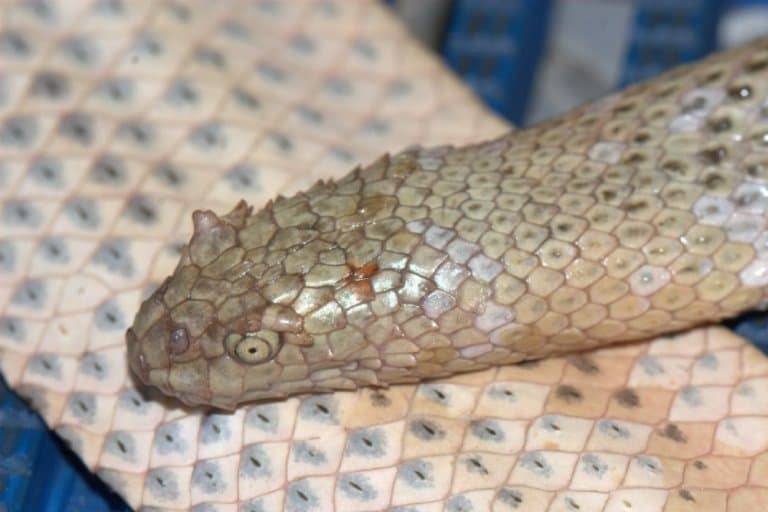World Most Venomous Snakes
The Most Venomous Snakes In The World
Across the ages, snakes have struck fear into the hearts of many. The chilling effects of their venom are known far and wide.
Across the globe, there are over 3,700 species of snakes; however, not all of them are venomous. There are 600 that are venomous and only 200 species that are capable of killing or injuring a human.
By definition, venom is a toxin that is secreted or injected by an animal into its victims through a bite or a sting. This is different from poison, which enters its victims via inhalation, swallowing, or absorption through the skin.
We’ve used the most reliable and verified sources and studies to bring you the definitive top ten most venomous snakes on the planet, and the deadliest. The most venomous, are not the deadliest.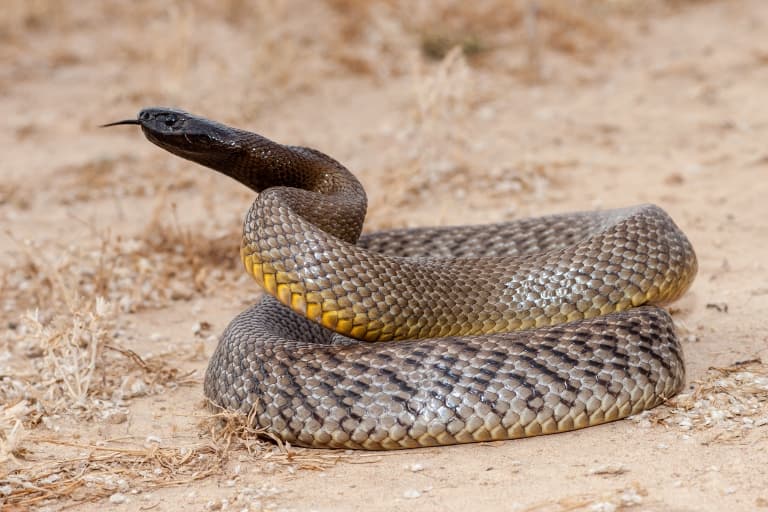
Top 10 Most Venomous Snakes
Venom is an extremely valuable tool for a snake. It can be used to deter predators as a form of self-defense. In addition, venom helps snakes overpower their prey, aiding in immobilizing them and preparing them for consumption.
Each year, an estimated 5.4 million people are bitten by snakes, with 2.7m from venomous snakes. Between 81,000 to 138,000 perish due to snake bites. Venomous snakes are also responsible for causing more than 300,000 amputations and severe injuries.
Most of these bites occur in Africa, Asia and Latin America. 2m each year are bitten by venomous snakes in Asia alone, which is 75% of all envenomings.
Those affected are typically from poor rural communities, often agricultural workers and children who play outdoors who are impacted by the consequences of venomous snakes. Children have smaller body masses, and so, are more susceptible to developing adverse effects.
The health systems in these low and middle income countries is often weak, while medical resources and transport in emergencies can be sparse.
Many of the world’s most venomous snakes live in tropical regions, but some live in oceanic waters. There may even be some living in captivity.
The potency of a snake’s venom can be quantified by its LD50. This is the median lethal dose or concentration required to kill half of a test population. The lower a venom’s LD50, the more deadly.
1. Inland Taipan (LD50: 0.025 mg/kg)
The inland taipan’s venom is so lethal that one bite is enough to kill a hundred men. It paralyzes the victim’s muscles and induces respiratory arrest. Its venom also has hemolytic properties, meaning it damages and breaks red blood cells apart.
When they attack, inland taipans move quickly with several strikes. Due to their ferocity, they have earned the nickname, “the Fierce Snake”.
Once bitten, victims will experience headaches, nausea, abdominal pain, and other unpleasant symptoms. Immediate medical attention is required to prevent fatalities.
Despite being the most venomous, they are not the deadliest snake as they rarely come into contact with humans, as they inhabit remote bush in Australia.
There have been no recorded deaths since the creation of the anti-venom in 1955. 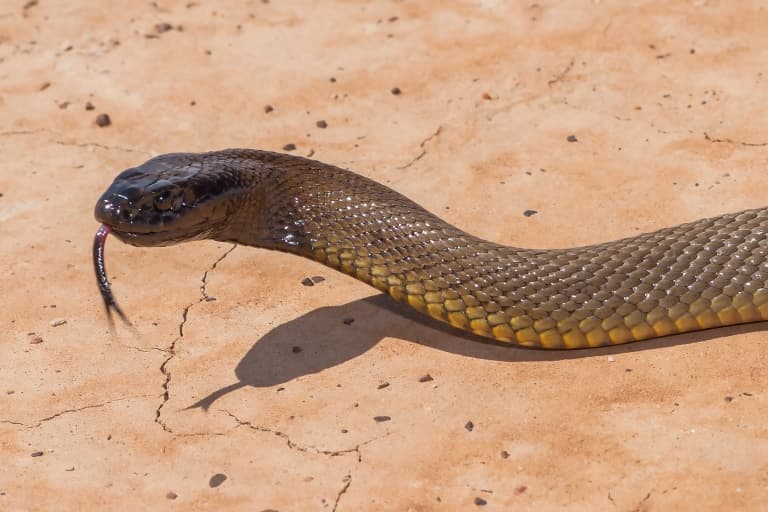
2. Dubois’ Sea Snake (LD50: 0.044 mg/kg)
Living in shallow reefs along the western coasts of Australia, the Dubois’ sea snake is the second most venomous snake in the world and the most venomous sea snake overall.
It preys upon fish and eels, as well as small invertebrates that live on the ocean floor. In general, the Dubois’ sea snake has quite a docile nature, but it will attack if provoked.
Interestingly, this snake’s fangs are relatively short compared to other snakes, measuring just under 2 mm long. It is a crepuscular species, so it is most active at dusk and dawn.
3. Eastern Brown Snake (LD50: 0.053 mg/kg)
Eastern Brown Snakes are found across the east coast of Australia and are the second most venomous terrestrial snake in the world.
They belong to the Pseudonaja genus and live in grasslands, woodlands, as well as urban areas.
These fast-moving snakes are diurnal but when the weather’s warm, they may become nocturnal to avoid the heat. It has been reported having cobra-like behaviors. When threatened, it will rise up off the ground, coil its neck, and open its mouth in a fearsome display.
The venom of the Eastern brown snake can cause convulsions, renal failure, paralysis, and cardiac arrest. When someone is suspected to have been bitten by an Eastern brown snake, it is recommended that they remain as still as possible to limit venom spread.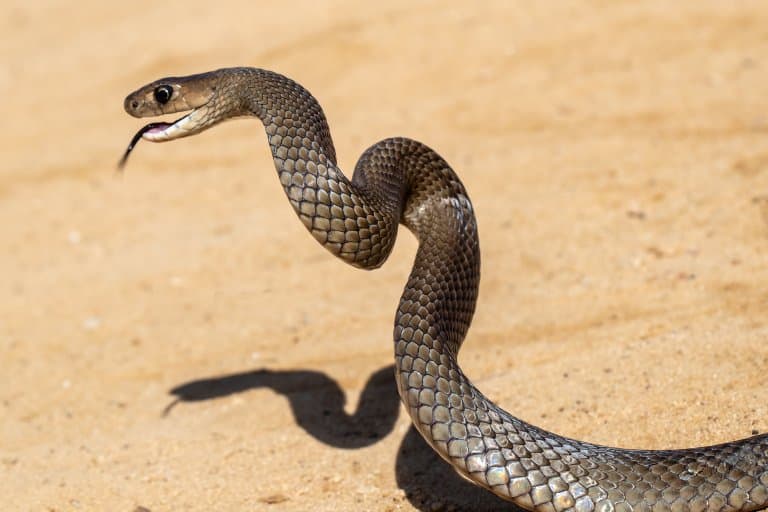
4. Yellow Bellied Sea Snake (LD50: 0.067 mg/kg)
These fascinating sea snakes can be found swimming in the open ocean, hundreds of miles from the coast. They occupy waters along the shores of eastern Africa, northern Australia, southern Asia, and the western side of Mexico.
As their name states, their bellies (the lower half of their bodies) are bright yellow, while the upper half of their bodies are black. Their tails have a spotted black and yellow pattern which, fortunately for humans, makes them easy to spot in the water.
Yellow-bellied sea snakes can dive and remain underwater for over an hour. It hunts fish, paralyzing them with its venom, and consuming them head first. This species appears to have few natural predators.
Their venom contains powerful neurotoxins that can cause paralysis in humans.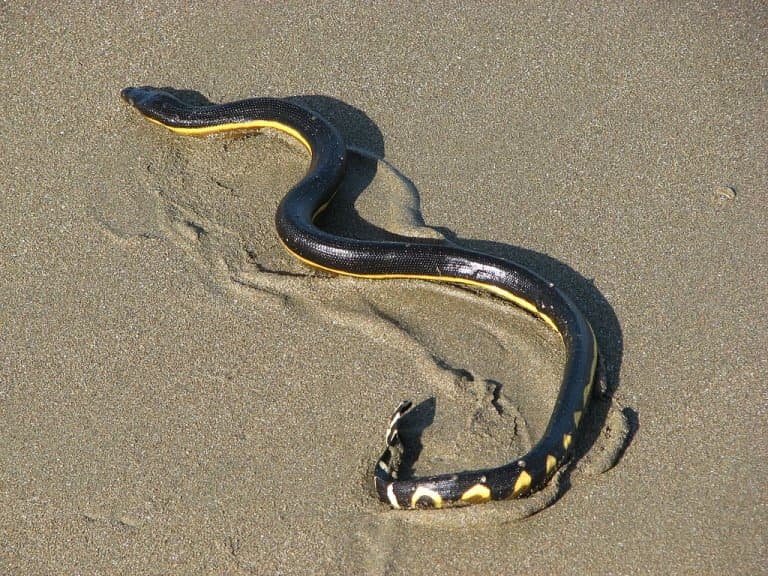
5. Central Ranges Taipan (LD50: 0.075 mg/kg)
This species (O.temporalis) was first encountered in the mountain ranges of Australia. Compared to other taipans, this species has been less studied by researchers.
The central ranges taipan mainly eats rodents, and they prefer dryer sandy climates. It is unclear as to how large these snakes can grow, but it is suspected they can reach lengths of more than 3 feet long.
If bitten, a human can succumb to the venom within hours if medical attention is not given.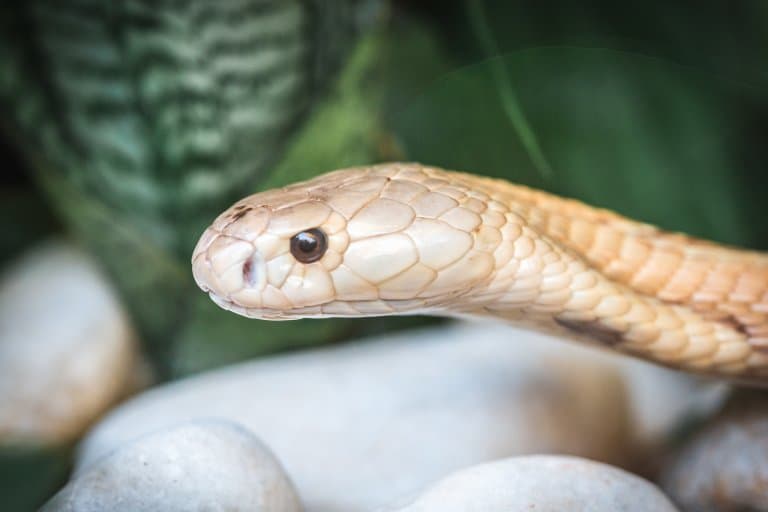
6. Peron’s Sea Snake (LD50: 0.079 mg/kg)
The Peron’s sea snake is commonly known as the horned sea snake or the spiny-headed sea snake. The IUCN has it listed as a species of least concern and populations are stable. Fishing and habitat loss are their biggest threats.
These spiky reptiles dwell along the southern coasts of Australia, as well as in Indonesia, and southern China. As strong swimmers, they can dive to depths of up to 60 meters.
7. Many-banded Krait (LD50: 0.09 mg/kg)
Kraits are closely related to sea snakes and cobras and can be found in China and Southeast Asia. They produce neurotoxic venoms that damage neurons and induce paralysis.
Banded kraits reside in warm shallow waters, coral reefs, and mangrove swamps. They are often seen hunting eels. Female kraits are usually larger than their male partners, and so, generally, target more substantial prey.
The banded krait is armed with venom that is 10 times more lethal than a rattlesnake’s. Bite victims merely feel slightly itchy and numb, before more severe broader symptoms such as struggling for breath can arise. Luckily, attacks on humans are rare.
8. Coastal Taipan (LD50: 0.099 mg/kg)
The coastal taipan (Oxyuranus scutellatus) is the last species of snake that makes up the three genera of taipans. It is the largest snake belonging to the Elapidae family, a group of approximately 300 snakes that have short fangs on their upper jaw.
They can be found across coastal regions of northern and eastern Australia and the island of New Guinea.
The coastal taipan is the third-most venomous terrestrial snake in the world and has a high level of notoriety in Australia and is generally more feared than any other snake.
Timely treatment is critical as more than 80 percent of untreated cases are fatal.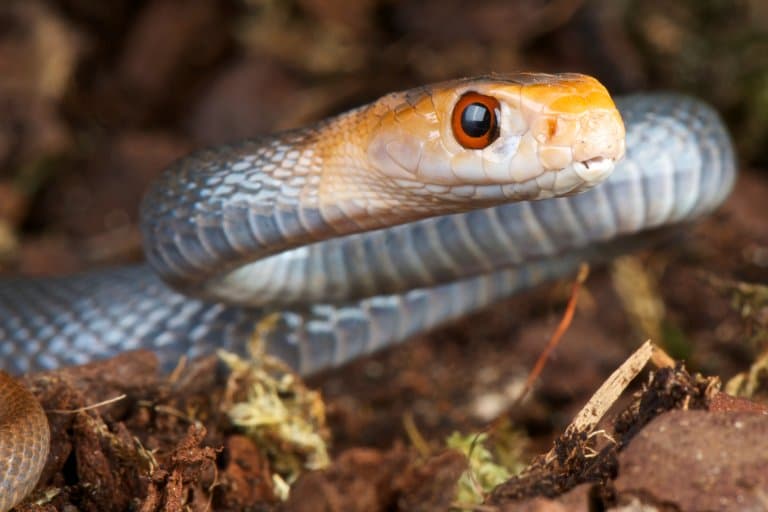
9. Black-banded Sea Krait (LD50: 0.111 mg/kg)
The black-banded sea krait is most often found in temperate latitudes in the Indian and western Pacific oceans. They prefer to inhabit coral reefs.
Compared to sea snakes, banded kraits tend to spend more time on land. They will come ashore to nest, feed, and shed their skin. Exceptionally skilled at hunting, these snakes can hold their breath for long periods of time.
Their potent venom attacks the human nervous system and can lead to convulsions, paralysis, cardiac failure and death.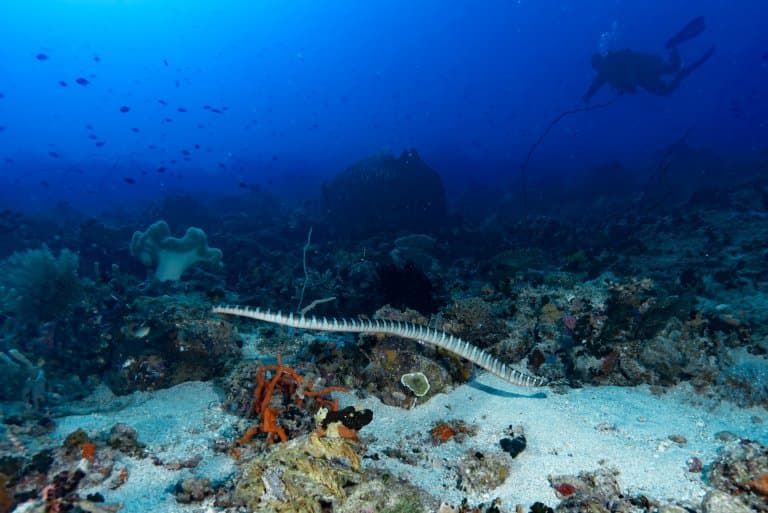
10. Beaked Sea Snake (LD50: 0.1125 mg/kg)
The beaked sea snake (Enhydrina schistosa) is a medium-sized snake that grows up to an average of 4 feet in length. Like the many banded-krait, females are larger than males.
They are one of the most common sea snakes found along the coast of India, the Arabian Sea, Persian Gulf and seas around South Asia.
Their nostrils are located on the surface of their snouts and can be voluntarily closed when the snake is beneath the surface. It prefers to feed on fish while other sea snakes have been documented preferring eels.
This sea snake is so widely distributed it’s thought that it’s responsible for 90% of all deaths from sea snake bites.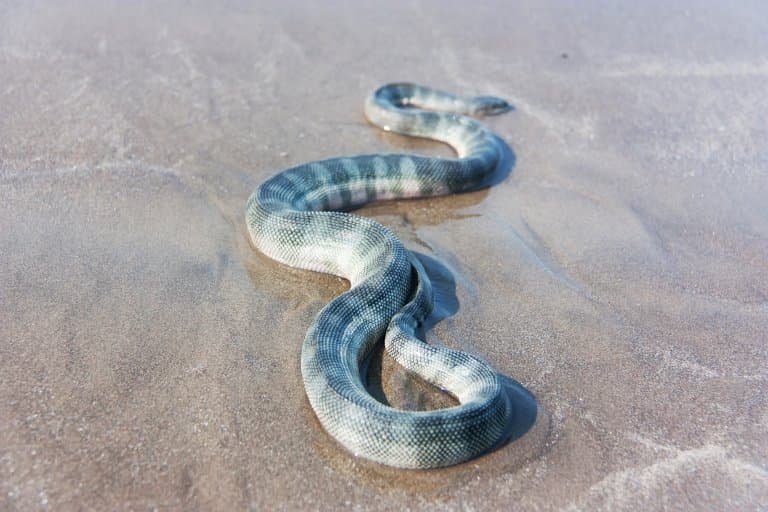
My Thoughts
Many animals have evolved mechanisms to help them both thrive and survive – snakes are no exception. The strength of their venoms is demonstrated by the effects they have on their prey and adversaries.
Multiple factors determine how dangerous a particular snake is to humans, not just how venomous they are. In addition to the toxicity of their venoms, these reptiles also vary in their temperaments, how likely they are to strike, their delivery mechanisms, and where they are located.
While many of these snakes don’t have any interest in humans, it is best to be cautious if you ever find yourself in geographic locations known to house these formidable animals.
Fact Sources & References
- WHO (2021), “Snakebite envenoming“, World Health Organisation.
- “Most venomous land snake“, Guiness World Records.
- Kevin Markwell (2015), “The “killer of the cane fields”: The social construction of the Australian coastal taipan“, Journal of Australian Studies.
- David Williams (2016), “Are Australian snakes the deadliest in the world? Not even close“, The Conversation.
- Anuradhani Kasturiratne (2008), “The Global Burden of Snakebite: A Literature Analysis and Modelling Based on Regional Estimates of Envenoming and Deaths“, PLoS Med.
- Mohapatra B, Warrell DA, Suraweera W, Bhatia P, Dhingra N, Jotkar RM, et al. (2011), “Snakebite Mortality in India: A Nationally Representative Mortality Survey“, PLoS.

